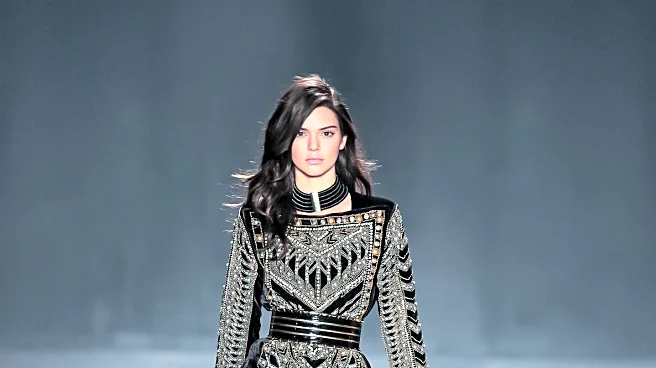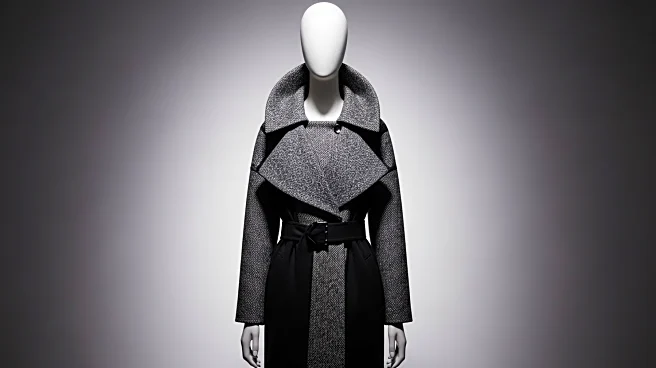What's Happening?
Balmain's Spring 2026 menswear collection, unveiled by designer Olivier Rousteing, marks a significant shift towards genderless fashion. Rousteing's latest work is characterized by a relaxed and organic
approach, incorporating elements such as shells, beads, and stones into the designs. This collection is a reflection of Rousteing's personal journey and his commitment to innovation and disruption in fashion. The menswear line shares many features with its womenswear counterpart, including weathered-leather blousons and wide-mesh knit pieces. Rousteing emphasizes that true luxury lies in freedom and enjoyment, a sentiment echoed in the collection's texture and tactility.
Why It's Important?
The move towards genderless fashion by a major brand like Balmain signifies a broader cultural shift in the fashion industry. This trend challenges traditional gender norms and promotes inclusivity, potentially influencing other designers and brands to adopt similar practices. By embracing genderless fashion, Balmain is not only expanding its creative boundaries but also appealing to a wider audience that values diversity and self-expression. This could lead to increased market share and brand loyalty among consumers who prioritize these values.
What's Next?
As Balmain continues to explore genderless fashion, other fashion houses may follow suit, leading to a more inclusive industry. This shift could prompt discussions on gender identity and expression, influencing public perception and societal norms. Additionally, Balmain's approach may inspire collaborations with other designers who share similar values, further expanding the reach and impact of genderless fashion.
Beyond the Headlines
The adoption of genderless fashion by Balmain could have long-term implications for the industry, including changes in marketing strategies and retail experiences. As consumers increasingly seek out brands that align with their values, companies may need to adapt their business models to remain competitive. This trend also raises ethical considerations regarding representation and inclusivity in fashion, prompting brands to evaluate their practices and policies.











